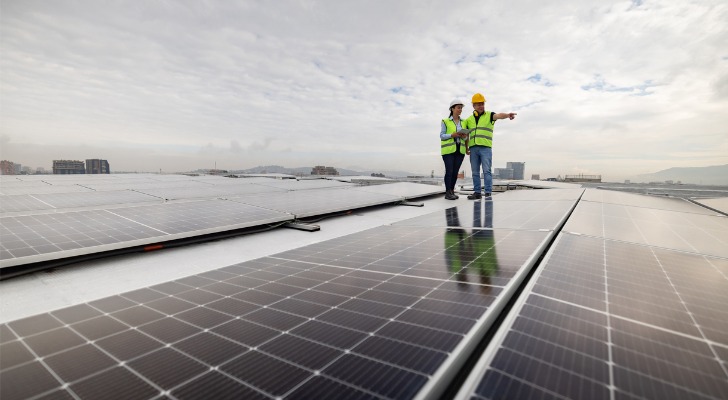How will climate change impact your finances? It’s likely a question you have pondered, especially as the effects of climate change continue to escalate. While we grapple with this global issue, climate change should also compel us to reconsider our investment strategies. This guide is designed to help you prepare your portfolio by explaining climate change investing and highlighting emerging opportunities. A financial advisor can also help you respond to new risks and invest in the future.
What Is Climate Change Investing?
Climate change investing is defined as investing in businesses or funds that are likely to benefit from the global shift toward a more sustainable economy. Those businesses that actively lessen their environmental impact and contribute to a greener future are often recipients of such investments.
Embracing environmental, social and governance (ESG) criteria guides investment choices toward companies committed to ethical practices and sustainability.
But climate change investing isn’t solely altruistic – it’s also opportunistic. For example, the move to a net-zero economy could create nearly $200 trillion worth of opportunities for investors – approximately $7 trillion per year – by 2050, according to BloombergNEF, a research service that focuses on clean energy, innovative materials and commodities and other corners of the economy.
Risks of Climate Change to Your Portfolio
Climate change can introduce some risks to investment portfolios. In 2015, The Economist Intelligence Unit (EIU) estimated that the world’s manageable assets could fall by an estimated $4.2 trillion by 2100 due to climate change. Assets that could lose their value following changes in regulation or market conditions are some of the clear risks that climate change poses to your portfolio.
For instance, consider the decline in coal stocks. The shift toward renewable energy and regulations have notably diminished their worth, highlighting the potential value of adapting to the long-term impacts of climate change when investing.
Types of Investments That Help Prepare for Climate Change

As our world grapples with the far-reaching effects of climate change, a proactive approach to investment becomes paramount. Steering capital toward solutions that mitigate and adapt to these challenges not only promotes sustainability but also interests major investors.
Solar
Solar investments encompass diverse avenues, each contributing to climate resilience. Residential solar panels empower homeowners to generate clean energy while reducing reliance on fossil fuels. On a larger scale, commercial solar projects hold immense promise. Businesses that embrace solar energy can stabilize operational costs, shield themselves from fluctuating energy prices and enhance their public image as environmentally conscious entities.
Institutional investors are also recognizing the potential of solar. Investment in solar infrastructure, such as solar farms and utility-scale projects, can generate attractive returns and contributes significantly to carbon reduction targets.
Other Green Initiatives
As concerns intensify about the planet’s ecological well-being, investors are increasingly turning their attention to green initiatives that align with sustainability and climate resilience.
One of the most impactful ways to contribute to climate change preparedness is by investing in renewable energy projects, in addition to solar power. Wind, hydro and geothermal ventures not only reduce carbon emissions but also promise long-term profitability as the world shifts towards cleaner energy sources.
Green initiatives extend to sustainable infrastructure projects, such as eco-friendly buildings and efficient transportation systems. These investments not only reduce the carbon footprint but also offer attractive returns as urban centers adapt to more environmentally conscious practices.
As extreme weather events become more frequent, investing in water management becomes paramount. Funding projects that enhance water conservation, purification and distribution can help mitigate the effects of droughts and floods, ensuring access to this precious resource.
Meanwhile, the tech sector offers innovative solutions to climate challenges, from advanced weather prediction models to carbon capture technologies. Investing in these areas can drive both environmental protection and economic growth.
Global Investing
Climate change investing also involves identifying foreign businesses that are focused on green initiatives and practices like sustainable agriculture and waste management. A perfect case study could be investing in countries and industries leading renewable energy production like Sweden, Denmark and Germany.
Carbon capture and storage (CCS) technologies combat emissions by capturing carbon dioxide from industrial processes and power plants and storing it underground. Investing in worldwide CCS research and implementation contributes to emission reduction goals.
Afforestation initiatives – the planting of trees where there previously were none – is another global effort that combats deforestation while promoting both biodiversity and climate stability.
Expected Returns When Investing for Climate Change

Climate change investing does not necessarily imply compromising on returns. Some ESG-focused funds may outperform traditional funds or the market as a whole. But keep in mind that performance can vary from year to year.
A Charles Schwab study examining the performance of ESG funds between 2011 and 2021 found that these investments consistently ranked in the middle of their peer groups. The firm also did not find any convincing evidence that ESG funds are significantly riskier than similar funds without an ESG focus.
Bottom Line
Preparing your investment portfolio for the ongoing impact of climate change involves understanding the risks that climate change poses while identifying the companies, projects and initiatives aimed at mitigating those risks.
Portfolio Management Tips
- A financial advisor can select investments for you and manage your portfolio according to your financial goals. Finding a financial advisor doesn’t have to be hard. SmartAsset’s free tool matches you with up to three vetted financial advisors who serve your area, and you can have a free introductory call with your advisor matches to decide which one you feel is right for you. If you’re ready to find an advisor who can help you achieve your financial goals, get started now.
- If your portfolio is lagging, Fidelity says it may be for one of several reasons. For example, you may hold too much cash, have too much money tied up in one stock or simply have too many tax-inefficient investments, your portfolio may suffer. Take a hard look at your portfolio to see if any of these apply.
Photo credit: ©iStock.com/AegeanBlue, ©iStock.com/Hispanolistic, ©iStock.com/kamisoka
